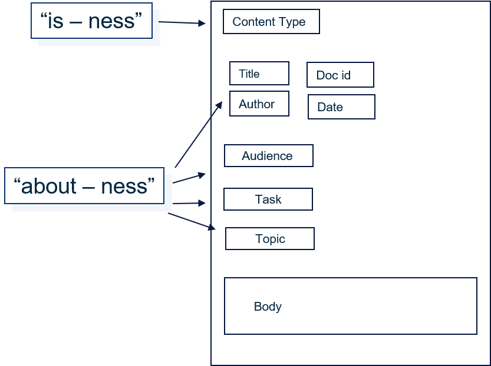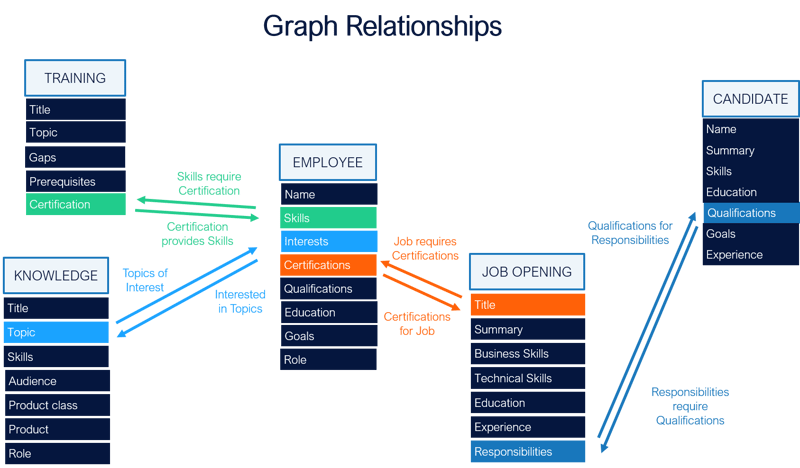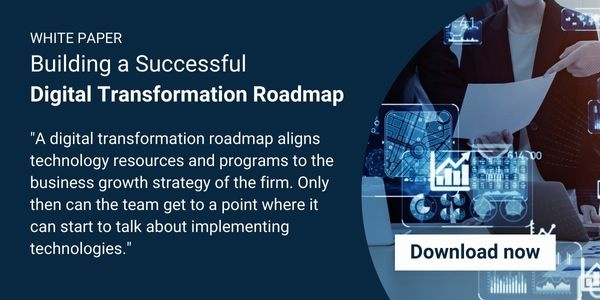The pandemic was a trigger for changing work patterns and driving online behaviors that have become permanent - that it not only accelerated the pace of digital transformation, it convinced even late adopters to double down on DX initiatives. It fueled the current interest in AI and ML technologies to further automate business processes and customer facing digital business capabilities like chatbots and recommendation engines.
The New Normal
The COVID pandemic prompted an accelerated rate of change as organizations sprinted to adapt to a new reality. Changes that took place during this time included:
- increases in remote work
- higher levels of employee turnover
- rollouts of new digital platforms
- tools and processes
- adoption of different policies and procedures.
As the pandemic worn on it catalyzed changes to address urgent problems have had lasting impacts that have become “the new normal.”
These changes could be summed up as an acceleration of digital transformation.
Organizations were faced with the need to make great leaps forward along their digital journeys, whether or not they had planned to do so. For example, the percentage of employees working remotely was already growing, but the need to embrace social distancing through remote work moved this needle dramatically. Companies that had no platforms for remote communication had to rapidly select and implement them on timelines that were extraordinarily compact.
One client told us they had to turn a two-year roadmap into a four-week project.
Knowledge Management Implications of Accelerating Digital Transformation
While any digital transformation effort comes with obstacles and issues pertaining to change, these are substantially exacerbated and accentuated if timelines are compressed to the point where time is not sufficient for careful decision making.
The result? Process inefficiencies, haphazard onboarding, and ineffective information access.
These outcomes in turn impact various dimensions such as work culture, employee engagement, skill development, and operational efficiency.
New platforms, processes, and policies mean there is a need for opportunities for learning and development. The greater freedom and flexibility derived from the removal of physical locations is counterbalanced by the removal of physical social networks for knowledge access. More subtly, when employees work remotely (even part time), there is a greater likelihood of limiting the opportunistic collaboration and natural channels for knowledge exchange that occur in a physical space.
Employee productivity can suffer when disconnected information environments increase friction in day to day activities and tasks. Tools that are adopted rapidly may not yet be carefully embedded in existing work processes, causing disruption in work patterns and proficiency. Knowledge repositories become even more critical, but risk dilution due to volume and velocity.
Change is the biggest driver for the potential of knowledge loss. However, recognizing this presents the opportunity to recommit to best practices for knowledge capture and exchange.
Technology Enablers
The landscape of tools and applications used across many (if not most) enterprises today is like a garden of plants that sprung up at different times to feed different needs. Whether they are knowledge bases, learning management systems, PIM/DAM/MDM systems, customer relationship management platforms, or performance tracking tools, many of these systems were not designed with a consistent information architecture; they were designed for specific goals, often in isolation from other systems, users, or interests.
When it comes to using technology to address challenges in connecting users to information, problems cannot be solved without first enabling a coherent information architecture to undergird the solutions.
Information sources, mechanisms for access, and methods of retrieval often vary throughout the enterprise. In addition to the sources listed above, companies may have intranets, data warehouses, ERP systems, business intelligence (BI) platforms, or custom databases and applications. A variety of devices may be used to access these sources, with various retrieval methods, such as faceted search, semantic search, BI integration, or ontology navigation.
Knowledge graphs provide a framework for integrating and navigating across platforms, tools and systems.
Role of Knowledge Graphs
Knowledge graphs can generate significant value by harmonizing information and structures. They provide a consistent way to organize information throughout the enterprise. Think of them as the “knowledge scaffolding” of the organization; not just a mechanism for navigating and discovering information across different systems, but also a reference architecture connecting multiple systems and processes.
Webcast: How Knowledge Graphs Increase The Value of Company Data Assets
Knowledge graphs consist of various information entities, their characteristics, the (controlled) vocabularies used to fill values for characteristics and the relationships that can be drawn between the characteristics of information entities. These relationships may be qualified as is-ness or about-ness.
Is-ness describes the nature or type of the entity, whereas about-ness relates to differentiating characteristics or specifications.
By understanding these relationships, we can infer context and extract contextual knowledge.

Knowledge graphs enable the use of simple data models to create complex reporting or lookups by leveraging the is-ness and about-ness relationships between entities and their characteristics. When organizations use knowledge graphs to gather reference data and the contextual knowledge from products, solutions, problems, tasks and processes, they can power AI and machine learning systems.
Further reading: The Role of Ontology and Information Architecture in AI
Knowledge graphs define the operational and transactional data, content, and knowledge of the organization. They can power a substantial number of applications for an enterprise. An HR manager could use a knowledge graph of various HR-related entities not only to answer operational questions such as “Are we able to promote from within or should we hire out to cover this role?” but also to power a job recommender tool that interfaces with their candidate management system. Aligning entities and relationships is the groundwork needed to build a knowledge graph architecture that is a consistent expression of the ontology or model of the business.
Click the image to view larger.
Getting Started
Thinking about building a knowledge graph that reflects the full scale of the enterprise can seem like a daunting enterprise.
Start small.
One way to begin is to simply map out an inventory of systems and applications. What is the current state architecture or landscape across which data, information and knowledge flow?
Next, prioritize areas of focus by working with a select user base to identify key tools and systems at hand. Ask open-ended questions about what platforms users work with on a daily basis, and rate each system for trust in accuracy, currency and accessibility.
For the high-value systems where users have the most difficulty finding what they need, do the following:
- Establish what entities the systems contain
- Build out the characteristics for each entity (is-ness and about-ness)
- List out the vocabularies that pertain to characteristics
- Draw connections or relationships between like characteristics of different entities
- Identify inconsistent terminology, inappropriate levels of granularity or ambiguity, and duplication or variations
Then, develop a prioritized set of use cases for the highest value content to determine which projects will have the biggest impact on improving information access and retrieval by fixing the underlying data.
When an organization is faced with emerging challenges that stem from the dizzying acceleration of digital transformations, knowledge graphs can be used as a tool to remediate and improve information architecture. They are an efficient way to build a model that reflects the content and processes of the entire organization. As a bonus, they can also leverage that information for AI applications and machine learning.
Our team of information organization specialists can help you architect your post-crisis employee experience. Contact us today to learn how we can help.


